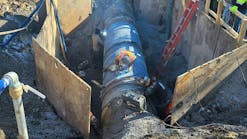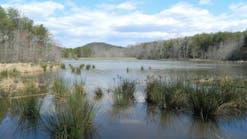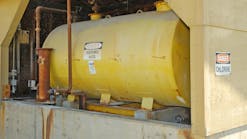Every time I go to the bathroom here at work, I’m annoyed by a dripping faucet in the men’s room. It’s a faucet with one of those round, knob handles. If the knob is centered, it’s only a slow drip. But if the knob is turned to the left, it becomes a steady trickle.
I’ve mentioned it to the building engineer and he said it was on his list of things to do, but I got the impression it was a long list and the drip was near the bottom. Either way, it’s still dripping.
According to the EPA, a leaky faucet that drips at the rate of one drip per second can waste more than 3,000 gallons of water each year.
And, by the way, that’s the HOT water dripping in the men’s room. So not only does it waste water but it also wastes energy. (I don’t really see the water as “wasted.” It’s just not used. What’s wasted is the time, money and Energy required to treat the water, deliver it to the faucet, then collect and treat the resulting, err, waste water. So, you could say the dripping hot water is wasting power and Energy!).
The American Water Works Association has a handy little calculator online at its WaterWiser page. For larger, more rapid leaks, it suggest you hold an 8 ounce cup under the dripping fixture and time, in seconds, how long it takes to fill the cup. I turned the knob to the left so it was trickling at its worst and filled the cup in 40 seconds. That translates to nearly 50,000 gallons a year, according to the calculator.
There are several water leak calculators available on the web suitable for use by homeowners and business. For water utilities, AWWA offers more robust software for use in water loss control programs.
The association recently published the third edition of AWWA Manual M36, Water Audits and Loss Control Programs. The manual provides step-by-step guidance and tools for performing a standardized water audit and implementing a water loss control program for all water utilities.
In addition, the AWWA’s Water Loss Control Committee has released the newest version of its free, downloadable, Water Audit Software. Version 4 of the spreadsheet-based software allows utilities to conduct a basic water audit that is ideal for small systems.
On a related note, I read an interesting article on-line about a study that found people are more likely to conserve water when they see it as helping the environment or saving them money. They are less likely to conserve when directed to do so by government mandate. The survey was conducted by San Jose State University in California.
To encourage people to conserve, researchers advised local water providers to use concrete examples of how water use affects the environment and the costs associated with leaking pipe and faucets.
I wonder if the building engineer would take action if I told him that he’s raising the company’s carbon footprint by failing to fix the leak? Or would he just walk away mumbling about odd editors?
You can learn more about the Manual M36, download the free Water Audit Software and find the water drip calculator at the WaterWiser section of the AWWA website, www.awwa.org.



